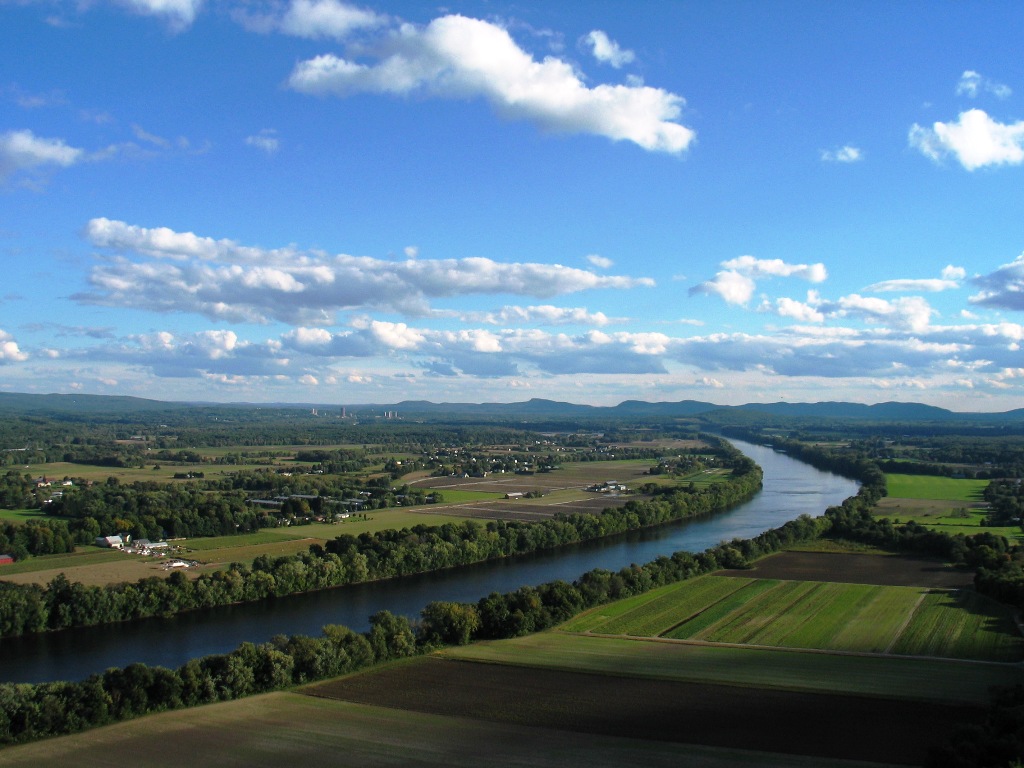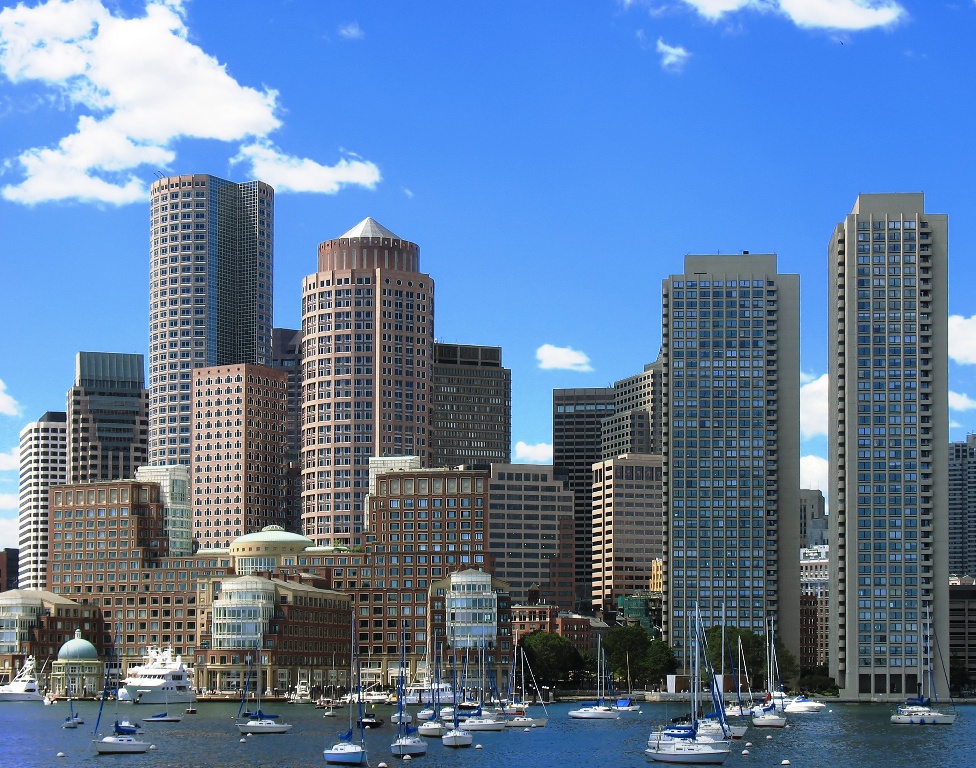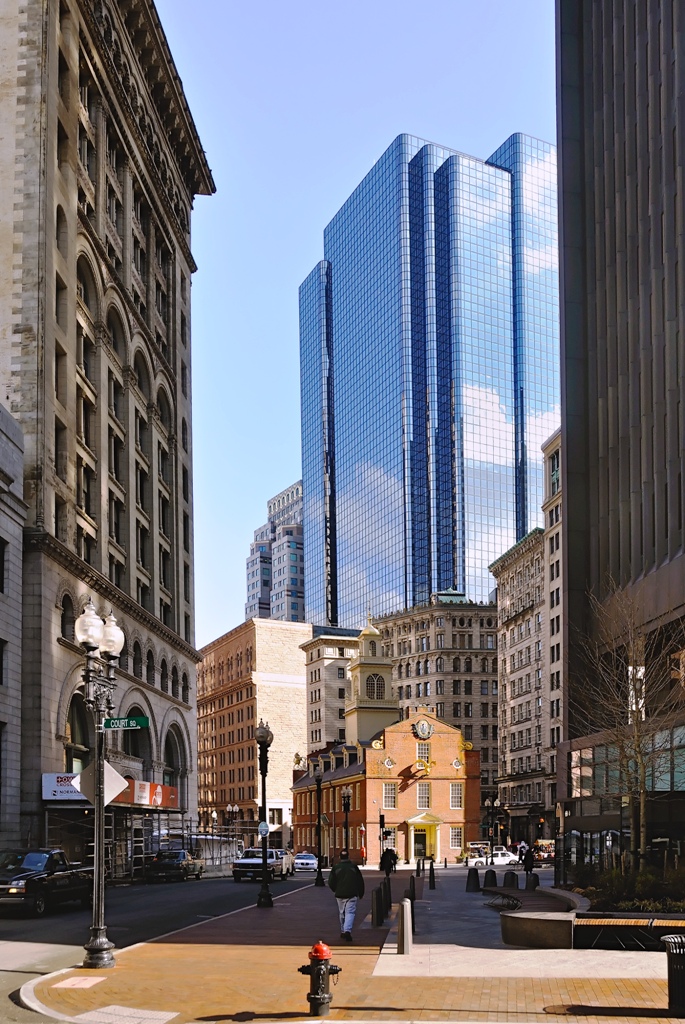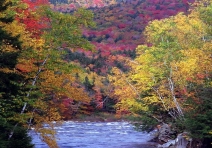WORLD TRAVEL NEWS ARTICLE
THE STATE OF MASSACHUSETTS, U.S.A.
Massachusetts in the north east is one of the New England States and covers 7,824 square miles. Its westerly neighbour is New York; to the north are Vermont and New Hampshire. Rhode Island and Connecticut lie to the south and the Atlantic Ocean to the east. Renowned for its history, autumn colours, culture and architecture, it is also popular with beach lovers. The universities of Yale and Harvard are found here in Massachusetts. Originally the state attracted English Puritan settlers who saw it as a refuge.

Massachusetts State House
Massachusetts Bay lies between Cape Ann and Cape Cod with the two arms of Boston Bay and Cape Cod Bay. Cape Cod with its miles of deep sandy beaches, its Colonial village and whale watching opportunities is a very popular tourist destination.
The Pilgrim Fathers landed at Cape Cod in 1620 seeking a refuge for English Separatists. Plymouth is now a much visited seaside resort. It has a replica of the Mayflower and a recreated village of 1627 to explore, with the help of costumed guides.
From Hyannis, the largest village, you can take the Cape Cod Central Railroad for a delightful sightseeing trip. Ferries will take you to the 100-square-mile island of Martha’s Vineyard and to the islands of Nantucket and Chappaquiddick.

Pioneer Valley from Mount Sugarloaf
High on the must see visitor list is the Berkshire Ranges to the west of the otherwise low lying State. Tourism, dairy farming, market gardening and cranberry growing are prominent in the area. Visit Pittsfield where Herman Melville wrote Moby Dick in the mid 1800s. Mount Washington State Forest is the place to head for in the Berkshires if you are an outdoor activity enthusiast, nature lover or bird watcher. The aptly named Bash Bish Falls in the Forest are popular with photographers.
Visitors going to the New England Quilt Museum at Lowell also visit Salem, where the witch trials took place in 1692 and is one of the oldest settlements in the State. Seventeenth century buildings are carefully preserved and there is a museum recording the witches’ issue.

Downtown Boston
Boston, a large vibrant city, is the State Capital and is a port at the mouth of the Charles River opening into Massachusetts Bay. Its waterfront has been converted to elegant harbour-side houses well worth strolling past. It was settled 10 years after Plymouth and nowadays is a very sophisticated city. The Catholic Democrat President John F Kennedy was born here in 1917. The house where he was born is now the J F Kennedy National Historic Site and is also a Library and Museum outlining the highlights of his Presidency, including a very moving account of his assassination in 1963.

The J.F.K. Library
Boston is probably best known for the Boston Symphony Orchestra which has been in existence since the late 1800s. It is also the birthplace of Edgar Allan Poe, born in 1809 and the home of the world famous Boston Red Sox Baseball team. The Scotsman Alexander Graham Bell came to Boston in 1871 to teach the deaf and his interest in sound transmission led to his invention of the telephone in 1876. A museum exists in his honour showing early equipment.
In 1773 the British parliament passed the Tea Act. This act revived the colonial issue of taxation and led to £18,000 worth of tea being dumped in the harbour. The incident sparked off the American War of Independence.
Boston was a centre of protests against slavery. W E B du Bois, the brilliant African American sociologist and Civil Rights leader, was born in Massachusetts. The Museum of Afro American History and the guided tour, the Black Heritage Trail records the facts. Massachusetts was the only State with no slaves at the 1790 census. The Trail starts from Boston Common and along it you can see the safe houses where escaping slaves were given sanctuary, and you can also visit the oldest “Black” church.
The Common itself covers 48 acres: part common land, part formal gardens and lakes. The graves of the Bunker Hill Battle victims can be seen in a corner of the Common. It is similar to London’s Hyde Park with a soap box area for people to air their political views. There is a delightful Freedom Trail walk to follow with recommended coffee-break points. Pick up a trail map and instructions from the Boston Common Visitor Centre and follow the red stripe.
The site of the battle at Bunker Hill can be visited. You can also visit the clapboard house that belonged to Paul Revere, who “rode by night” to warn Lexington citizens of the coming of the British. Massachusetts State House is the original pro forma for all the State Capitols with its gold dome and shouldn’t be missed but you are spoiled for choice with all the museums and art galleries on offer. You can also go to Cambridge and visit the museums of Harvard University.

Court Square, Boston
Boston City Centre surrounds the harbour on Shawmut Peninsula, but shops and restaurants of note can also be found at Quincy Market, the revamped old meat and produce markets. In addition to all its museums and galleries, Boston has several lovely theatres offering a wide range of entertainment.
Greater Boston covers some 50 square miles, so if your time here is limited, you will probably not have enough time to see everything.
GETTING THERE
Boston’s General Edward Lawrence Logan International Airport is 6 kilometres from the city centre.
For the latest visa requirements visit www.projectvisa.com
For information about the weather in Massachusetts visit www.worldweather.org
You may also like to read

U.S.A - NEW ENGLAND - LOBSTER TALES & TROLLEY BUSES
Debbie Watkins shows Tour-smart readers that lobsters and a rich heritage play an important part in America’s New England coastal states.

U.S.A - NEW ENGLAND IN THE FALL
Tim Ware creates a beautiful picture using the autumnal shades of New England for Tour-smart readers.


Comments